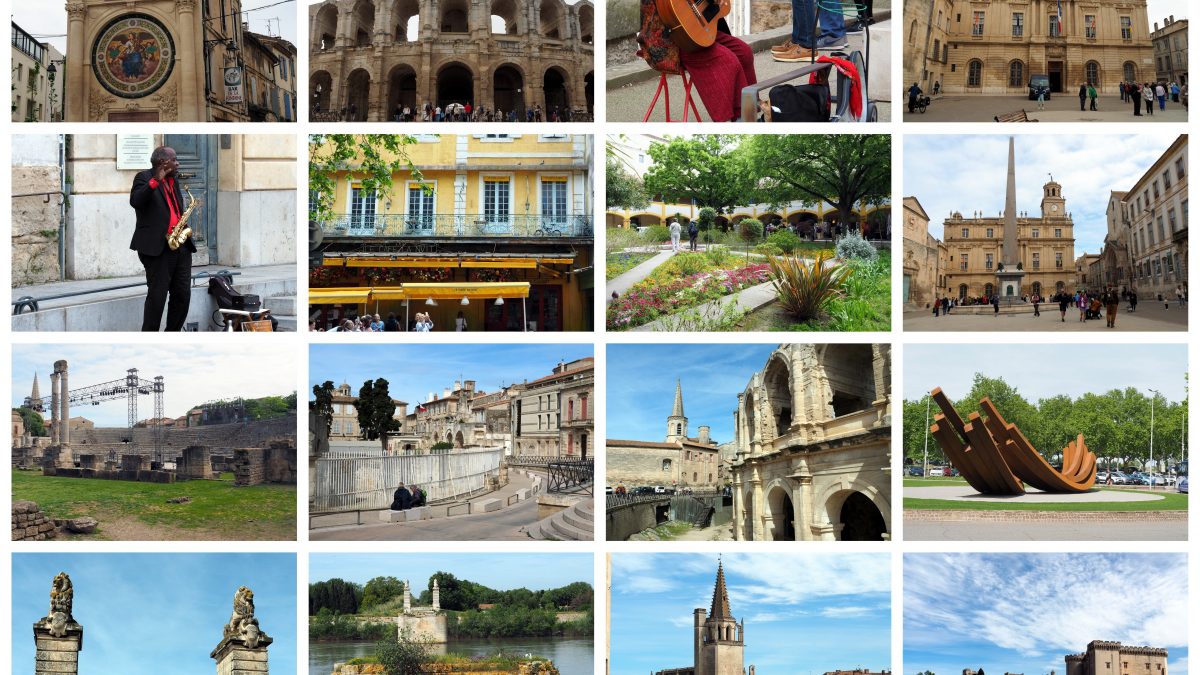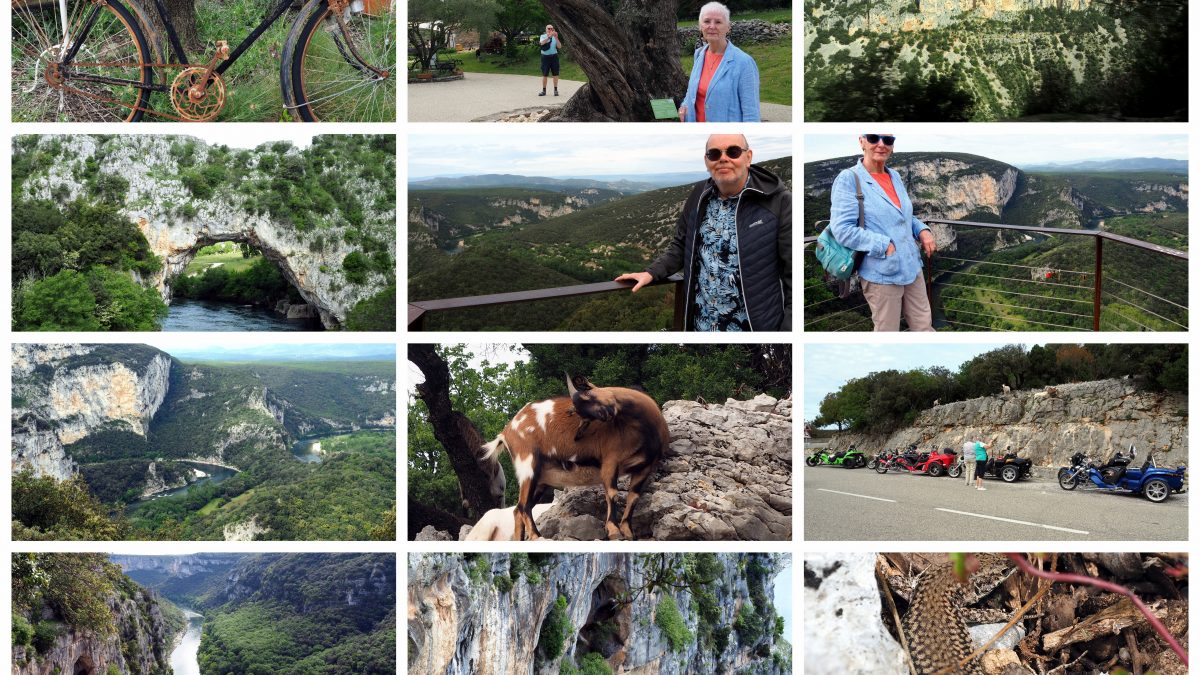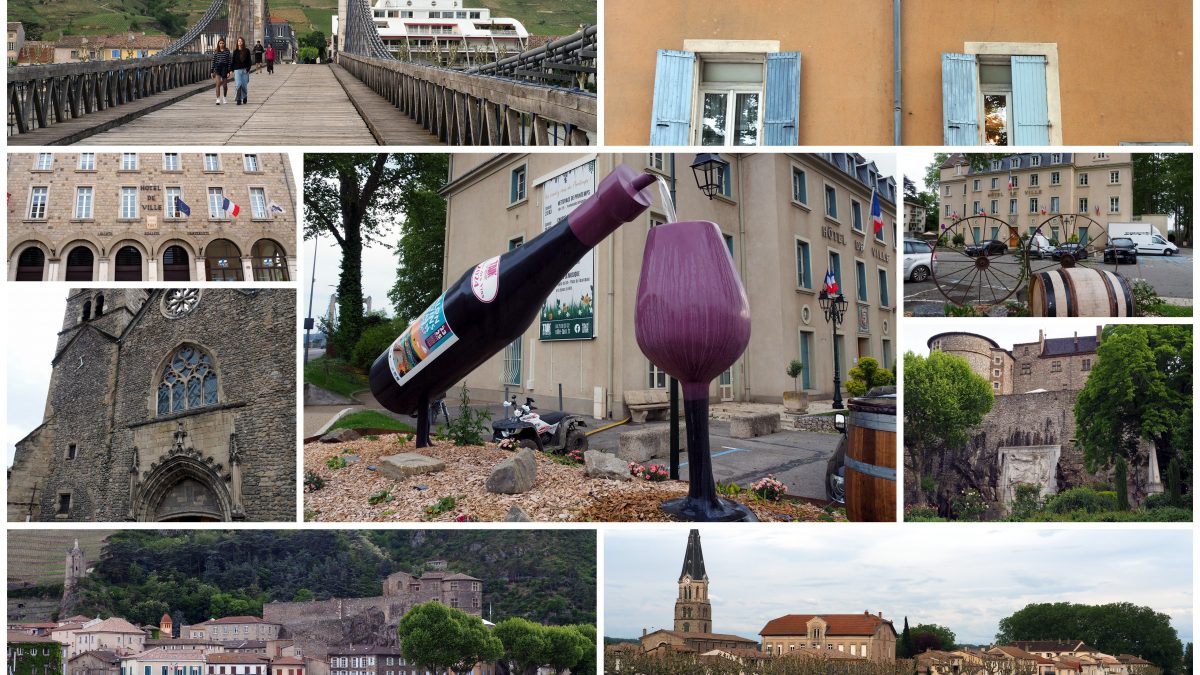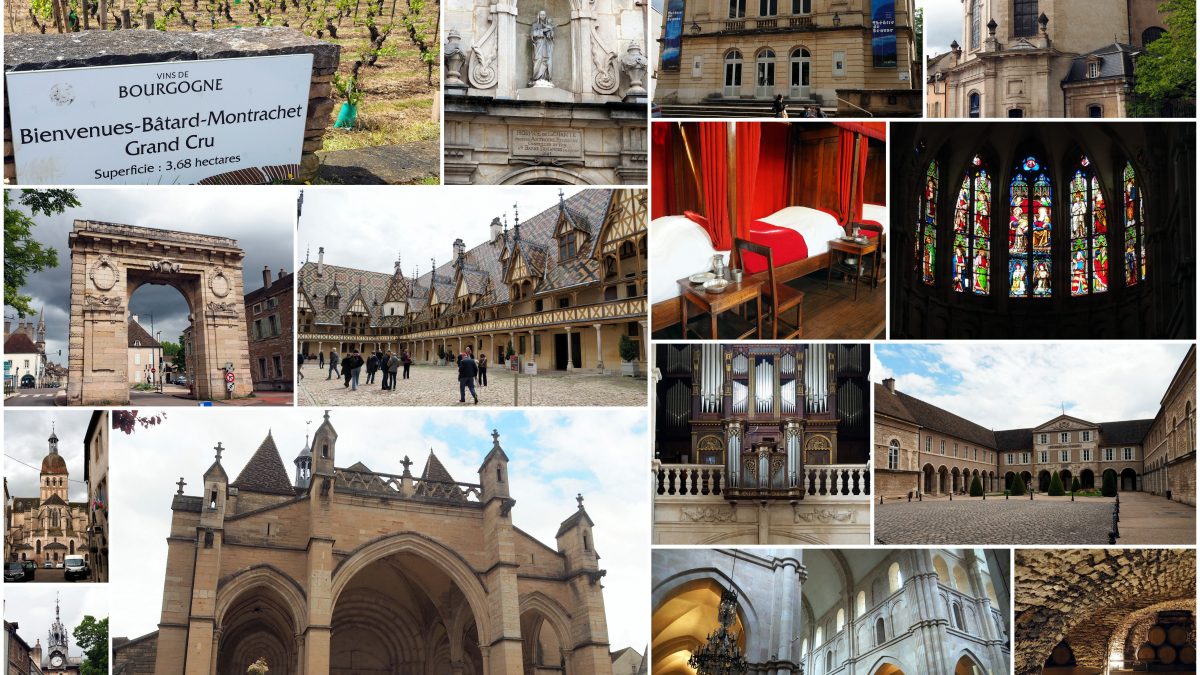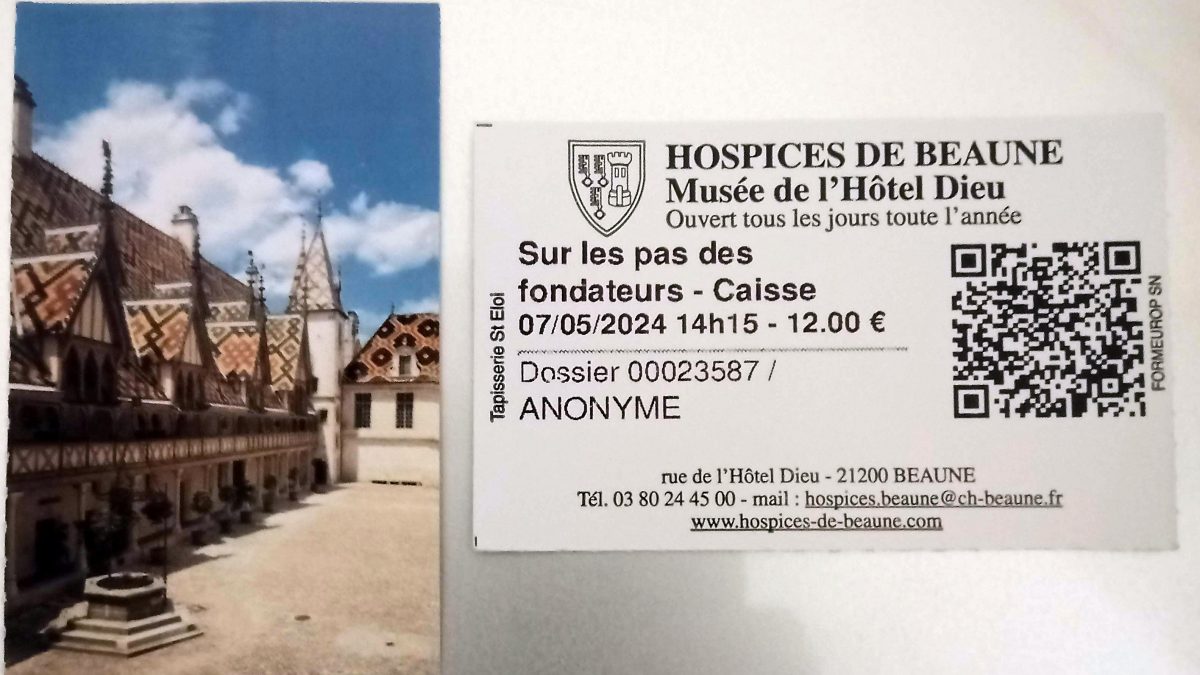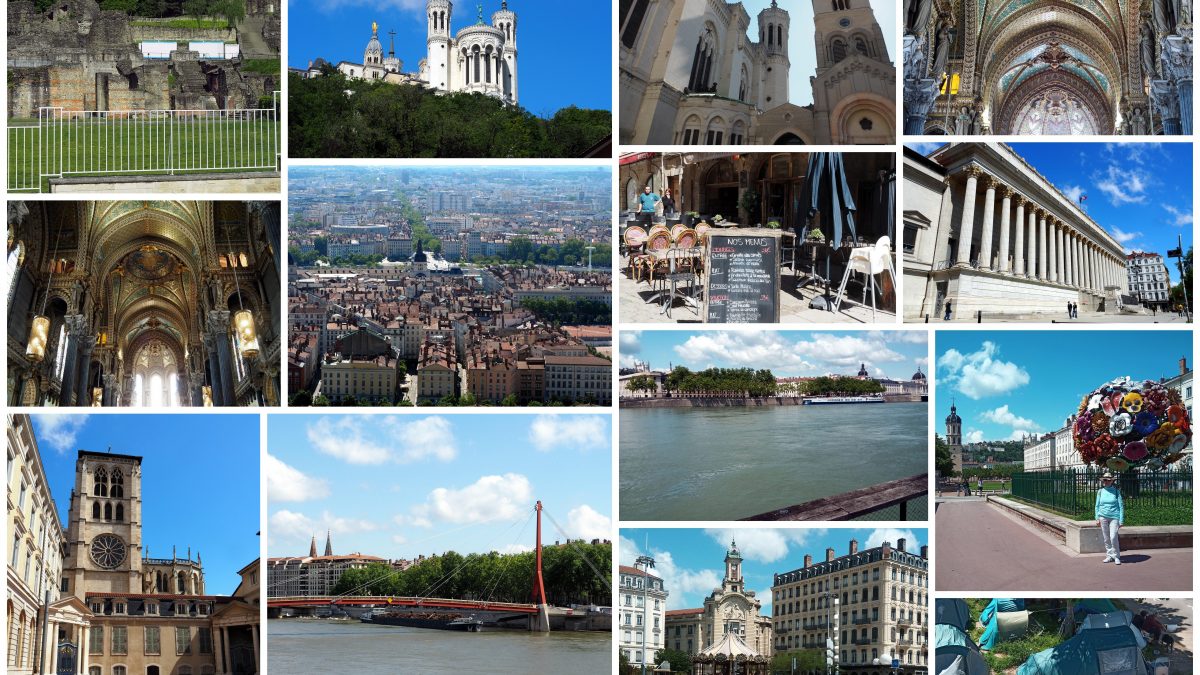Returned from last week’s Rhone cruise, which was a first on so many levels. For a start, it was the first time on a flight since September 2019, after which the pandemic forced a blindingly stark retreat into home isolation and very restrictive travel options; and although we have had a number of holidays since, all but one (the Saga cruise) had been on home turf. The flights were also operated by Ryanair, a company I’d always sworn blind I would never fly with again. But, the Rhone and this particular itinerary was always on our list, we could fly out from Stansted and we aren’t getting any younger, so, ermm…. hey-ho!! To be fair the flights themselves were fine – both delayed but I don’t in all conscience blame that on the flight carrier, much as it pains me to say so. Anyway. so far so good.
We flew into Marseille and were transferred by coach to the Riviera ship, the William Shakespeare, situated in Avignon. We unpacked (in record time) and sortied along to our first evening meal, which was buffet style on the first night (but only the first night). The ship cabin was very pleasant, plenty of hanging space, excellent ensuite and, excepting a couple of first night niggles, well serviced throughout the trip. We also thought the food was generally of a solid standard all week (particularly the evening meal), although the breakfast buffet hotplates could leave some of the “hot food” lukewarm – shout out however to the made to order omelettes, they were excellent. The Captain’s farewell dinner was particularly tasty and well presented.
So then, on with the daily visits…
- Avignon
- Morning walking tour (using excellent and much improved headsets) took us to the landmark bridge. The Pont Saint-Bénézet, also known as the Pont d’Avignon was a medieval bridge across the Rhône, although only four arches now survive. The Chapel of Saint Nicholas which sits on the second pier of the bridge was constructed in the second half of 12th century and has since been substantially altered but is still an interesting focal point of what is now a World Heritage Site – and we all know the song “Sur le Pont d’Avignon“, do we not?
- The focal point of the tour, understandably, was the Palace of the Popes (“Palais des Papes“), one of the largest and most important medieval Gothic buildings in Europe. And, lifted straight from Wikipedia, “once a fortress and palace, the papal residence was a seat of Western Christianity during the 14th century. Six papal conclaves were held in the Palais, leading to the elections of Benedict XII in 1334, Clement VI in 1342, Innocent VI in 1352, Urban V in 1362, Gregory XI in 1370 and Benedict XIII in 1394. Since 1995, the Palais des Papes has been classified, along with the historic centre of Avignon, as a UNESCO World Heritage Site, for its outstanding architecture and historical importance for the papacy“. I thought it was tremendously impressive internally and I should point out at this stage that this guide, along with all other excursion guides, was informative and entertaining throughout. They were all first class. 🙂
- In the afternoon, we took an independent stroll around the place to get a sense of the walled old town and were not disappointed. We strolled up to the Rocher des Doms park area, which was a lovely peaceful space with the added attraction of a view across to the Fort Saint André, built on Mount Andaon and a medieval fortress dating from the first half of the 14th century. As we ambled around we also came across the Petit Palais, which was also built in the 14th century and is now a museum and gallery. From there we walked down and upon an accidental visit to the Avignon Cathedral, which is a Roman Catholic church located next to the Palais des Papes and is the seat of the Archbishop of Avignon. The cathedral is a Romanesque building, constructed primarily in the second half of the 12th century. The bell tower collapsed in 1405 and was rebuilt in 1425. In 1670–1672 the apse was rebuilt and extended. ‘Accidental’ because when we went in we were unaware it was actually the cathedral – we didn’t enter the building itself accidentally, that would make us idiots!!
- Arles
- Started out with another early walking tour of Arles, one of the major factors in choosing this particular section of the Rhone. We did know there would be no sighting of the long gone ‘Yellow House’ but it was a surprise to find so little overt references to Van Gogh throughout the town centre (he was here less than one year, but he did complete 300 paintings in that time period). A couple of facsimile paintings in relevant locations depicting the scenes in question – outside the amphitheatre for example and another in the courtyard garden of the Old Arles hospital in which Van Gogh recuperated after the infamous ‘ear incident‘. The Amphitheatre is two-tiered and it is probably the most prominent tourist attraction in the city that had thrived in Ancient Rome. The towers jutting out from the top are medieval add-ons however. Built in 90 AD, the amphitheatre held over 20,000 spectators of chariot races and bloody hand-to-hand battles. Nowadays, it is still in use and draws smaller crowds for bullfighting during the Feria d’Arles in addition to plays and concerts in summer. Again, we did our own thing after the official tour and enjoyed the gentle ramble through the town past the Roman Theatre of Arles and the Church of St. Trophime, built between the 12th and 15th century. The Cafe La Nuit, frequently visited by Van Gogh, was there and was dutifully photographed but its reputation was somewhat tarnished by being closed amid legal wranglings and money laundering accusations. There again, probably wasn’t a paragon of virtue in Van Gogh’s time either and its popularity exaggerated, given it’s an imitation/replacement/relocation (choose your own reality) of the one in Gogh’s original painting.
- We declined the opportunity to visit the Pont Du Gard in the afternoon and spent our time relaxing and cruising the Rhone river towards our eventual next port of call at Viviers, idling past the lovely village of Tarascon and St Martha’s Collegiate Church and its very fine 15th century medieval castle (The castle of King René). We decided we’d seen enough aqueducts (Roman or otherwise) and whilst many would disagree, on this occasion we thought we called it correctly.
- Ardèche Gorges
- This morning we disembarked after breakfast and whilst our ship cruised upstream towards Le Pouzin, we explored (by coach) one of France’s most outstanding landscapes – the Ardèche Gorges, whose scale is a fitting reminder of Mother Nature’s awesome power. Sheer limestone cliffs plunged almost 1,000 feet to the river’s blue waters, which snake their way through stupendous rock formations, culminating in a huge natural arch, the Pont d’Arc – unlike Marsden Rock, the arch remains. 🙂 We enjoyed marvellous views at every turn of caves, grottoes and natural sculptures before returning to the ship, which had by this time moored in Le Pouzin. A Lavender farm and the Grotte De La Madeleine were pleasant enough ‘comfort breaks’ on the way to and from the Gorges. Sadly, we didn’t have time to explore the Caves.
- Tain L’Hermitage & Tournon Sur Rhône
- A little cruising before we arrived in Tain l’Hermitage (with Tournon on the opposite bank), surrounded by steep vine-covered hillsides, where another of the world’s most revered wines is produced. As we were only at this dock for the evening, we ate on the ship at lunch time and skipped dinner, taking in a stroll along the river and wandered around the two towns. We enjoyed both places, but it was Sunday so we had to forfeit both the world renowned chocolate of Tain l’Hermitage and the wines associated with this notable wine producing commune. The feature photo in the collage gives a not so subtle hint as to from where the Tain money is derived. Of the two, perversely we probably preferred Tournon (which is where we were moored), with its impressive castle and narrow, quiet medieval streets. The castle is reported to be one of the finest in the Ardèche, with the older Saint-Just castle built in the 10th century – it can still be seen on the right of the main courtyard. As a description, I realise that’s of no real use to any reader of this blog of course! We also had to cross the The Seguin bridge, the oldest suspension bridge in France to visit both towns. Two more Hotel De Ville were dutifully snapped for the old albums as well.
- Vienne
- A morning on the river and we then arrive at Vienne, at one time an ancient Roman stronghold. Another walking tour, another excellent guide, we were slightly but literally dampened a little by the rain but, fortuitously not continuously or particularly heavily. Headed first towards the Gothic former cathedral of St Maurice which was built between 1052 and 1533. The present-day building is a basilica, and in the wake of the French Revolution, the Vienne archdiocese was dissolved and the former cathedral became a plain parish church, although it is still known as Vienne Cathedral. We also got to see the Roman Temple of Augustus and Livia – Ancient Roman temples were among the most important buildings in Roman culture, and some of the richest buildings in Roman architecture, though only a few survive in any sort of complete state – hence the importance of this example. We had a little free time and then we caught the ‘noddy train’ (electric tram), which took us up to the church on the hill and which afforded excellent views of the town below, including the Roman Theatre. This was me at my most detached, possibly because the weather made it difficult to fully explore the town. The occasional ruin seemed preserved amongst a fairly nondescript town, almost as an afterthought. All me I’m sure and the obligatory Hotel De Ville was there present and correct and suffered the indignity of another photograph!
- Beaune (but from Lyon)
- Here’s where it got a little shaky as we were supposed to travel overnight beyond the Rhone and onto the Saône to berth at Chalon for the excursion to the town of Beaune. We learned that we had to dock in Lyon instead as it was decreed that the water levels were too high to get under the bridges on the Saône river. In fairness the vineyard and Beaune visit was still on but it did mean a much longer coach journey (and a packed lunch) – to the extent that some of us were starting to hypothesise that there had been far more mileage on the roads than actually travelling the river. Nevertheless, we embarked on the trip and went to the fields of Vins De Bourgogne for a brief photo stop (no actual visit though) and then on to the medieval town of Beaune; at its centre is the Hospices de Beaune, also known as the Hôtel-Dieu. Originally built in the 15th century as a hospital for the disadvantaged, it’s a jewel of High Gothic architecture, instantly recognisable for its colourful glazed roof tiles arranged in dazzling geometric patterns (more later). We were given quite a lot of free time in the town and we dutifully wandered the very well preserved medieval centre before deciding to pay for a visit to the aforementioned Hospices de Beaune.
-
- This proved to be a delightful surprise, very well curated and cleverly laid out. The Hospices de Beaune or Hôtel-Dieu de Beaune is actually a former charitable alms house. It was founded in 1443 by Nicolas Rolin, chancellor of Burgundy, as a hospital for the poor. The original hospital building, the Hôtel-Dieu, one of the finest examples of fifteenth-century Burgundian architecture, is now of course a museum. (Otherwise we could have been arrested for going in accidentally and that would make us idiots)! I thought it was a fantastic building and the self guided English commentary was both interesting and informative. Beaune centre was likewise very picturesque and we managed to see a number of its featured buildings, including the chapel of the Oratorian College (circa 1708-10), the Beffroi (clock tower), and the collegiate church of Notre Dame. We then met up with the guide for a wine tasting at the Cellier De La Cabiote, which was very pleasant and with wines that were far subtler than we’re used to (said the opinionated philistine with no taste). Then back on the bus for the long coach journey back to the ship. We were certainly delighted not to have missed the excursion as Beaune is a lovely walled city, with about half of the battlements, ramparts, and the moat having survived in good condition. The central “old town” was extensive and the Hotel De Ville was of course present and correct. Ironically, Beaune is not primarily a tourist town but one in essence centred on the wine industry, but we certainly weren’t the only coachload(s) there and it clearly nevertheless attracts a large amount of tourists. Entry Ticket picture evidence of legal admittance to avoid any unnecessary, pesky idiot accusations
- Lyon
- Final day and another fairly early start for a tour of the city of Lyon. Two surprises – it was a lovely sunny day and, unaware of the chilling wind, I left the ship inappropriately dressed in only a shirt (I did have on other clothing items, otherwise that would have made me an idiot) and spent most of the morning whining like a baby and shivering my ‘ollocks off (Yorkshire term). Entirely my own fault of course. Secondly, it was a coach trip and I had for some comically inexplainable reason been expecting a walking tour. It soon became apparent I’d got the wrong idea there as well. Lyon is a bigger, more complex city than I had envisaged and is also very hilly and we wouldn’t have got to some of the highlights on foot. We drove past the Ancient Theatre of Fourvière, a Roman theatre but still in use for cultural events. Then on to the basilica of Notre-Dame de Fourvière’s on the hill top, which although very ‘grand’ and ornate internally was actually built in the 19th century. I’ve since read that some of the interior was unfinished as late as the 1960s. Lovely views of the city from here as well. The coach then took us to the front of the Palais de justice historique de Lyon (infamously trialled the “Butcher of Lyon”, look him up) where we did indeed undertake a walk around the old town and where we took in some of the winding streets, unusual interior courtyards – again I quote from the Interweb where it states that “the traboules, courtyards and miraboules, which lead nowhere but are often of great beauty! Spiral staircases, turrets, Italian-style galleries, wells, statuettes and sculptures, and small gardens are some of the hidden treasures that lie in wait.” True gems and without the excellent guide we wouldn’t even have known they existed beyond the imposing entry doors.
- After lunch we went back out to explore on our own. You’ll be pleased to know that it was now a lovely and warm afternoon (just to put your mind at rest as I know you were worrying endlessly about my physical condition). We enjoyed a lovely stroll around the old town and along the banks of the Saône river. The city is crammed with antique shops and intriguing traboules – those pesky narrow covered passageways enabling silk merchants to transport their wares to the river without getting wet – that today are a joy to amble through. As well as its glorious architecture, Lyon is also generally acknowledged as France’s (and to locals, the world’s) gastronomic capital. In fairness it has much to commend it: nouvelle cuisine was invented near here and the city boasts a huge array of speciality food shops and eateries, including 20 restaurants with one or more Michelin stars and countless little places to eat. Not for us though, sadly. Nor were the lovely silk items – I was willing but Mrs. No Name baulked at the price, so nothing local was bought. So that was Lyon, much maligned by me on initial appearances but actually a place that requires longer exploration – I am but a simple Yorkshireman!
After breakfast the next morning we began the journey home, with the road trip to Marseilles a little time consuming as we had a four hour journey to the airport. The price we paid for flights from Stansted, probably worth it all things considered. The airport was small(ish) and extremely hot and we did get the impression that if Ryanair pulled out, the airport would struggle to function. Anyway, in summary we got back safely, if delayed again and overall we thoroughly enjoyed it. A minor negative included having a French balcony for the views and then ‘double parking‘ when moored, meaning our view was inevitably of another ship’s deck all of one yard away. I should stress that this in no way would prevent us repeating the exercise, although it would be interesting to try another river cruise line to compare ship amenities, cabins, food etc. We have only done two river cruises in total (not counting the Mississippi don’t you know) and the previous itinerary, a mere ten years ago was also with Riviera, so it might be worth a change. Nice touch to provide us with a momento map of the cruise undertaken though!!
NB…“That would make us idiots” is the ironic trademark of this particular blog author 🙂



